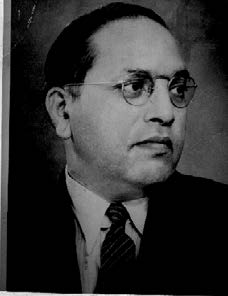The United Nation General Assembly, in a move that has since been equated to one of the greatest achievements of the modern human rights movement, unanimously adopted The Universal Declaration of Human Rights (UDHR) on Dec. 10, 1948. Not one single representative of the 48 countries then recognized by the UN Charter voted against this declaration. It seemed that a universal consensus of morals had finally emerged.
However, more than 65 years later, the conceptual existence of human rights is one of the most contentious issues of the 21st century. At the heart of this debate lies one key question: Are human rights built on shared values of the world’s ethical traditions? Or are they so deeply engrained in Western Judeo-Christian thought that they cannot transcend religious and cultural diversity?
The modern international human rights movement is historically specific to the 20th century. In 1945, following the establishment of the UN Charter, a diverse committee of philosophers and experts, including Charles Malik of Lebanon, Peng Chun Chang of China and John Humphrey of Canada, were given the task of developing a a universal rights framework that was eventually drafted into the UDHR. The assumption guiding this process was a simple one: Differences between religious and cultural traditions are not incommensurable. They could be overcome, whatever the foundational justification.
Today, from a conceptual standpoint, human rights belong to anyone by virtue of being human, regardless of race, sex, religious or political affiliation. In this sense human rights are inalienable, indivisible, interdependent and most importantly, universal. This last principle is the cornerstone for practicing international justice but many argue that it ignores the fact that human rights are perceived to inherently embody Western values.
John Witte Jr., the director of the Center for the Study of Law and Religion at Emory University School of Law, believes that the concept of human rights would not exist without a Judeo-Christian theology. He points to the theological doctrine “Imago Dei,” Latin for “Image of God,” which asserts that human beings are created in God’s image and therefore are entitled to rights that respect the inherent dignity of all individuals. Although modern movements have stripped away this theistic justification, human rights are continuously justified as an entitlement derived from the inherent dignity in all humankind.
The very concept of “rights” as an entitlement does not exist in other major religions, suggesting that the framework employed by modern rights movements is indeed biased towards Judeo-Christian values. In Islam, there is no direct equivalent for the concept of a “right.” Rather, individual rights are subordinated to the duties that one owes God and one’s community. It is a radically different perspective from modern rights movements’ individualistic approach.
In classical Hinduism there is also no equivalent concept of “rights.” The closest, “adhikara,” is loosely translated to mean “claim.” Claims, however, are distributed based on one’s social status and stages of life. B. R. Ambedkar, chairman of the drafting committee for the Indian Constitution, famously converted from Hinduism to Buddhism to fight the social discrimination institutionalized within the four varnas in the Hindu caste system.
Scholars have also argued that Buddhism is incompatible with the modern human rights movement. Indeed, one of the foundational principles in Buddhism is the doctrine of the impermanence of self, making it difficult to justify “rights” as an entitlement owed to a physical immanent individual.
These incompatibility theses, however, have stirred up counter-arguments from academics who continue to defend the universality of human rights. Jack Donnelly, a professor in the Josef Korbel School of International Studies at the University of Denver, argues that the perception that “rights” are incompatible with diverse religious perspectives do not stem from a substantive objection to the definition of “rights,” but rather the perception that the definition has been imposed on non-Western states. Amartya Sen, an economist who helped create the United Nations Human Development Index, points out that human rights are most often rejected by dictators as a means to justify authoritarianism.
Today, numerous regional bodies for enforcing and monitoring human right violations have been set up to take into account religious and cultural diversity. The European Court of Human Rights was established in 1949, closely followed by the Inter-American Court in 1979. The African Commission on Human and People’s Rights came into force in 1986. Finally the Arab Charter on Human Rights was adopted by the Arab League in 2004. These regional human right movements represent a concerted effort to take religious and cultural variations seriously. They have helped bridge the gap between universality and regionalism.
Is it also crucial to point out that religious and political leaders who haven’t grown up in the “West” have embraced the modern human rights framework to promote their personal agendas. There is a long line of engaged Buddhist human rights activists: The Dalai Lama is a famous one. In Burma, Aug San Suu Kyi’s rhetoric relied heavily upon human rights in her quest to overthrown military rule. India, whose population identifies itself as 80.5 percent Hindu, has been home to the most populous democracy in the world since its independence. India’s constitution guarantees freedom of speech and religion, and in 1950, Article 17 officially abolished “untouchability.” In addition, many Arab countries in the Middle East, in accordance with the tradition of “dhimmis” status dating back to early Islam, allow religious minorities to follow their own religious and family laws.
It’s is easy to let statements such as the one made by Ayatollah Ali Kamenei, the Supreme Leader of Iran, dictate global perceptions of human rights as a concept incompatible with religious difference – “For us the UDHR is nothing but a collection of mumbo-jumbo by disciples of Satan.” However the postwar era seems to indicate that people with different world views have common principles. While the background justifications for these principles may be very different, the modern human rights movement seems to provide the best global norms for promoting international justice. Nevertheless, activists must not forget the cultural and religious diversity that makes up our international system.





